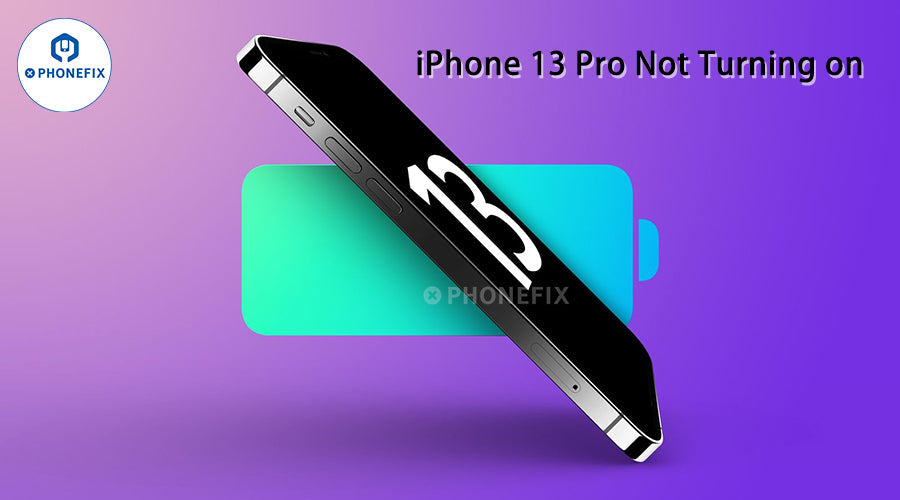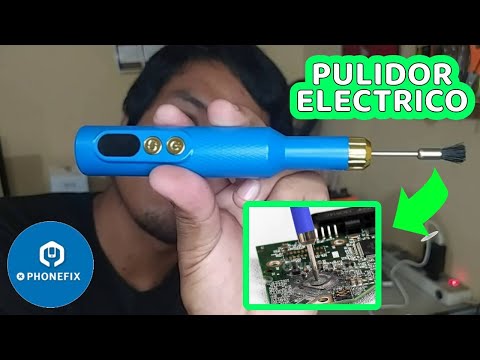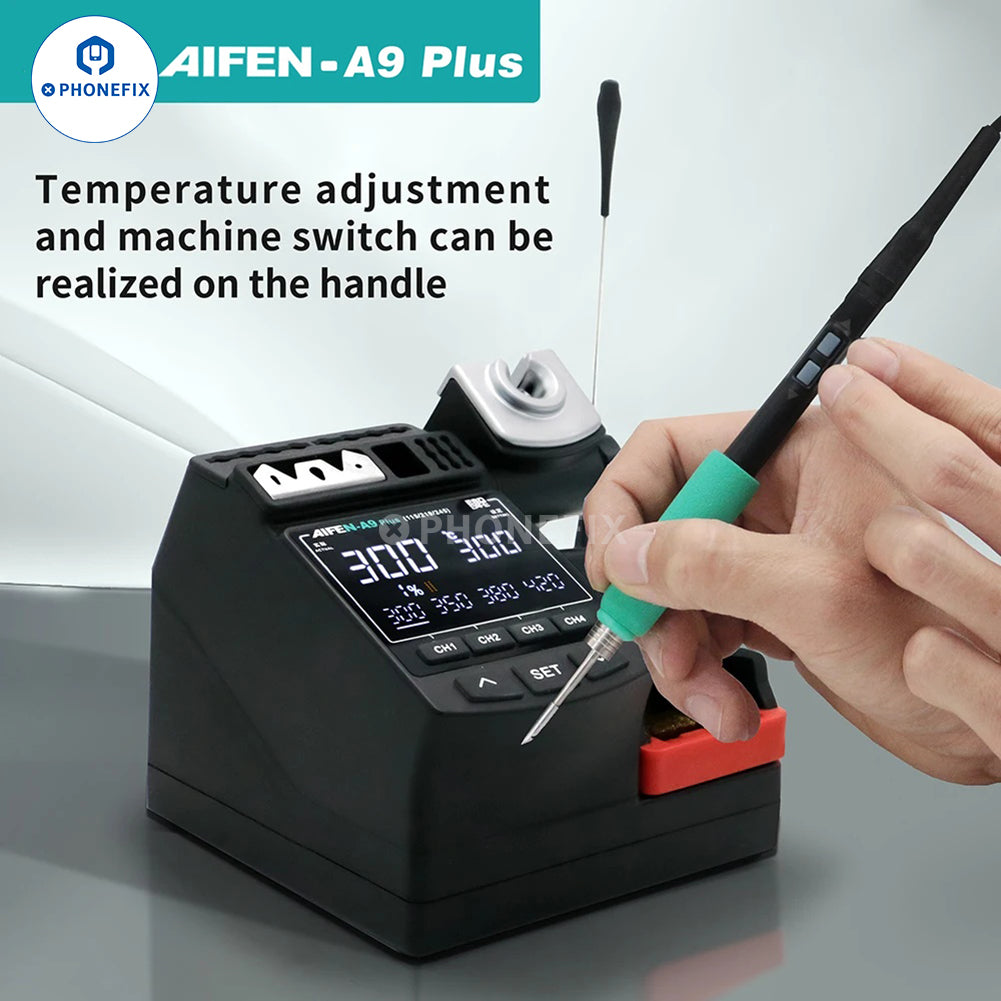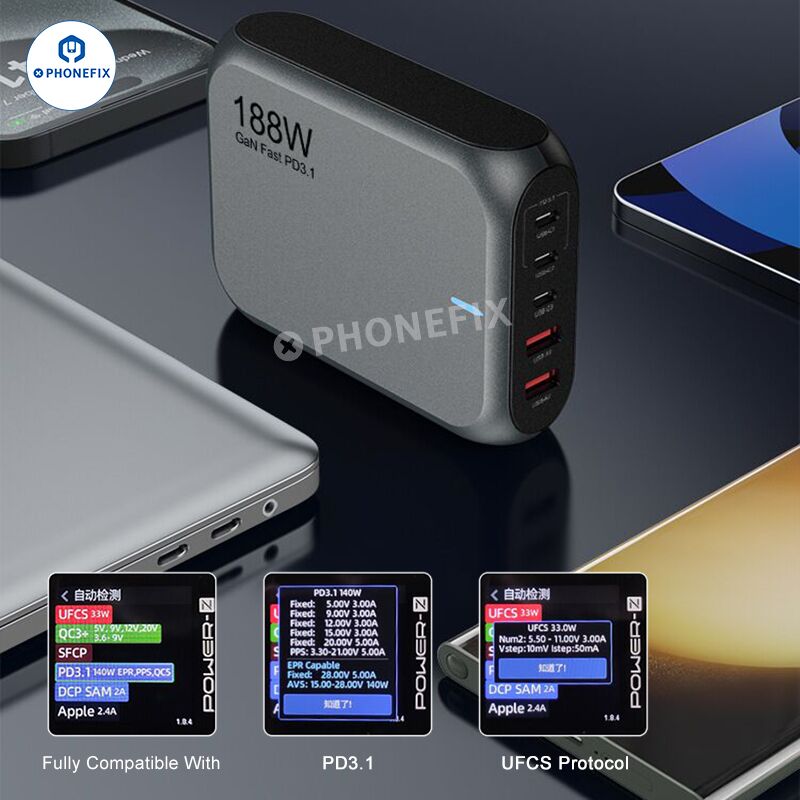The lively atmosphere of the Spring Festival has not completely dissipated, and people have gradually returned to work. At the same time, Phonefix has officially returned to work and started the journey of the new year. The repair case analysis brought to you this time is shared by the experienced repair master of chinafix.
The protagonist of this repair is an iPhone 13 Pro. After receiving the iPhone 13 Pro, the repairman, with his rich experience, first carefully checked the appearance of the phone, focusing on whether there were any signs of burning caused by water ingress. His eyes wandered through every gap, interface and corner of the phone, not missing any possible details. After a careful inspection, no obvious signs of water ingress were found. Since the common cause of failure, water ingress, was ruled out, the repairman made a prompt decision and began to disassemble the iPhone 13 Pro in an orderly manner, preparing to further explore the condition of the internal components and find the real reason why the phone could not be turned on.
When the repairman started to disassemble the iPhone 13 Pro, his brows furrowed more tightly with each part he removed. After the disassembly was completed, he couldn't help but sigh, deeply realizing the reason why this second-hand assembled machine was cheap. After using Professional iPhone Repair Tool to comprehensively measure the various functional modules of the iPhone, the repairman quickly locked the key to the problem with his profound professional skills and rich practical experience-the motherboard was faulty.
As the core component of the mobile phone, the iPhone Motherboard is like the central nervous system of the human body. Once there is a problem, the operation of the entire mobile phone will be paralyzed. It is no wonder that it cannot be turned on. The repairman decisively and carefully removed the motherboard from the phone and placed it on a professional repair workbench. He knew that troubleshooting motherboard failures requires great patience and superb skills.
First, he used a High-precision Multimeter to measure the voltage of each key circuit node on the motherboard, leaving no area where there might be an abnormality. Then, with the help of professional motherboard testing instruments, he performed functional tests on multiple chips and modules on the motherboard.After a meticulous inspection, it was finally discovered that the problem was with the hard drive. In further testing, it was determined that the hard drive was damaged and could not work properly. In order to restore the normal use of this iPhone 13 Pro, it was urgent to replace the new hard drive.
After confirming that the hard drive was damaged, the repairman quickly began to disassemble the hard drive. He first selected a high-precision Hot Air Gun from a professional tool box and accurately adjusted the temperature to a range suitable for chip disassembly, about 350℃-400℃. This temperature can soften the solder joints around the chip without causing damage to other components of the motherboard.
Then, he carefully held the hot air gun and moved it back and forth over the iPhone A15 Chip at a uniform speed, allowing the hot air to blow evenly over the surface of the chip to ensure that each solder joint can be fully heated. During the heating process, the master's eyes were always fixed on the chip. With years of experience and keen observation, he always paid attention to the subtle changes of the chip.
When he found that the solder joints around the chip began to melt slightly, he immediately put down the hot air gun and picked up a special pair of Tweezers. The tip of this pair of tweezers is extremely fine and can accurately clamp the edge of the chip. The master firmly clamped the A15 chip and gently picked it up, and successfully removed the A15 chip from the motherboard. The whole process was done in one go, showing his professional level.
Afterwards, the master selected the model that was compatible with this iPhone 13 Pro from the prepared new hard drives, picked up the hot air gun again, heated the position on the motherboard where the hard drive was originally installed, melted the residual solder, and cleaned the pads. Then, he picked up the new hard drive with tweezers, accurately aligned it with the pad position on the motherboard, and gently put it down. After that, the master adjusted the temperature of the hot air gun again, lowering it to 250-300℃, heated the solder joints of the new hard drive, melted the solder evenly, and firmly soldered the new hard drive to the motherboard.
After completing the replacement of the new hard drive and carefully checking other components on the motherboard, the repairman began to reinstall the various components back to the motherboard in an orderly manner. His hands seemed to have their own consciousness. He skillfully picked up each part and put them back to their respective positions accurately. Every movement was smooth and steady.
After all the components were put back in place on the motherboard, the master conveniently installed the repaired iPhone 13 motherboard into the matching iPhone Battery Frame, ensuring that the two fit tightly without any gaps. Then, he began to connect the cables, carefully aligning each cable with the interface and gently inserting it until he heard a crisp "click" sound to confirm that the connection was firm.
After completing the connection of all the cables, the key test machine link was entered. In order to facilitate quick testing, the master did not rush to install the screws, but only installed the iPhone Screen and made preliminary preparations for power on. He took a deep breath, his eyes revealed concentration and expectation, and gently pressed the power button. The screen lit up instantly. The repairman stared at the screen closely, not letting go of any possible abnormal screen, and paying close attention to whether the various functions of the mobile phone were running normally.
The screen lit up, the Apple logo appeared, and the system loaded smoothly. The master first tried the phone function, and the handset and speaker were normal. Then he turned on the camera, the picture was clear, and the focus was fast. He tested fingerprint unlocking and face ID, and the recognition was smooth, and the master smiled.
However, the master did not take it lightly. He ran a large game to test the heating and freezing, and used wireless network and data traffic to download and check the network. Half an hour later, the phone was normal. After confirming that the phone was repaired, the master tightened the screws according to the specified torque, and then put the other parts back to complete the assembly. Finally, after checking the appearance and function, this iPhone 13 Pro can finally be delivered to the customer.
After many tests, this ill-fated iPhone 13 Pro finally regained its life under the skillful hands of the repair master. From the initial inability to boot to the normal operation of various functions today, every detail of the repair embodies the master's superb skills and unremitting efforts. During this repair process, Phonefix's High-quality Mobile Phone Repair Tools also provided strong support for the master's work, making the repair process smoother and more efficient.
How to Solve The Problem of iPhone 13 Pro Not Turning on?












